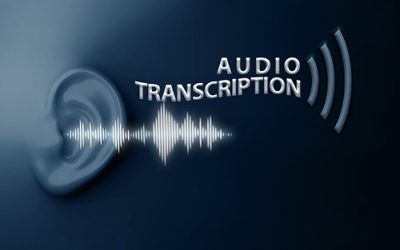Workplace communication is now more important than ever. Whether remote, hybrid or in-office, teams need to communicate effectively to stay on the same page and translate efforts into real results. Communication can happen synchronously or asynchronously. For in-office teams, synchronous or real-time communication occurs via face-to-face meetings and chats, and phone calls to colleagues in another part of the office. Popular modes of remote synchronous communication include standard tools like email, chat, intranets, and work collaboration tools like video conferencing supported by meeting transcription.
While real-time communication is important, asynchronous or async communication – where both parties don’t have to be present – comes with many advantages, like mitigating stress and improved productivity. Let’s take a closer look at the benefits of asynchronous communication for teamwork and how it can be improved.
Improve Async Communication with the Right Tools
Async communication using the right tools can effectively support key tasks like brainstorming and project planning, management and tracking.
- Asynchronous videos are a great way to provide information shared in real-time to team members, according to Clockwise, a San Francisco based software company. A video with the slides and audio presentation of the updates at a real-time meeting can be recorded, transcribed, and shared among all stakeholders. Feedback can be collected and questions answered using a tool like Slack, saving time on scheduling meetings and allowing the team implementing the changes to focus on this.
- Traditional e-mail is making a comeback with advantages like carefully written detailed notes on a particular topic, the ability to support attachments, direct links to calendars and meetings, and the inclusion of only participants in that discussion.
- Async tools like SurveyMonkey, Google Forms and TypeForm ease brainstorming across the team for projects.
- Content collaboration platforms like Dropbox or Google Docs can be used to share everything from meeting agendas to project outlines. You can also add images, video, and coding to team projects.
- Chat tools allow team members to engage with one another, easily share ideas and collaborate on projects, promoting effective async communication. Providing context in chat notifications and limiting use to office hours can improve the use of chat tools.
- Tools like Slack and its extension Geekbot allow for daily and weekly project tracking by collecting information using mini-surveys, channel postings or instant messaging.
- Lead generation software like Mailchimp or Emma automate the segmentation, capture and management, and dissemination of These automated platforms help distribute and analyze the data shared exclusively in meetings.
- Company newsletters can ensure regular communication with teams and also build a personal connection with employees.
Benefits of Asynchronous Communication
Convenience: Async communication allows team members to work on work schedules convenient to them to get tasks done. You can communicate with anyone regardless of geographical location – without having a face-to-face meeting.
- Flexibility: Unlike in a scheduled real-time meeting, People don’t have to respond immediately — unless it’s very urgent. This flexibility is a big advantage when you’re busy with other important work.
- Improves productivity: Continuous real-time video conferencing can be a major distraction. With async communication, employees can focus on their primary tasks and perform better, which can greatly improve overall productivity.
- Promotes authentic feedback: In a real-time video conference, people may feel inhibited and hesitate to provide feedback. On the other hand, async communication encourages honest, considered feedback as people are more likely to think deeply and express themselves better.
- Async communication is a better option for self-paced training, coaching and mentoring.
Role of Digital Transcription
When you are working on many projects, it’s crucial to have a record of meetings and conferences that you can revisit at any time. Digital transcription can support both types of workplace communication – synchronous and asynchronous.
Take a live video conference. It’s important to record and transcribe it to preserve the main points of the discussion. Digital transcription ensures that the text of video/audio messages are forever there to go back and refer to. Even if you use dictation technology with a transcription tool that automatically takes down what’s said, review by a human transcriptionist is crucial to ensure accurate documentation.
We have already seen that documentation is a prerequisite for asynchronous communication as you have to deliver messages to people who are not available face-to-face. Transcripts of live meetings can be shared across the team using collaboration tools. Digital transcription also supports asynchronous learning. In sales coaching that happens in real-time, trainees can be provided with transcripts that include the key points of the session. Captions and transcripts will help improve accessibility and inclusivity and make the material accessible to self-starters and people with hearing impairments.
The bottom line: both synchronous and asynchronous communication are essential and balancing their use is the key to successful collaboration. Recording meetings and getting them documented with the help of a meeting transcription service provider allows conversations to be shared and analyzed for decision-making. Recording conversations and transcribing them can help businesses make the most of synchronous and asynchronous communication.




